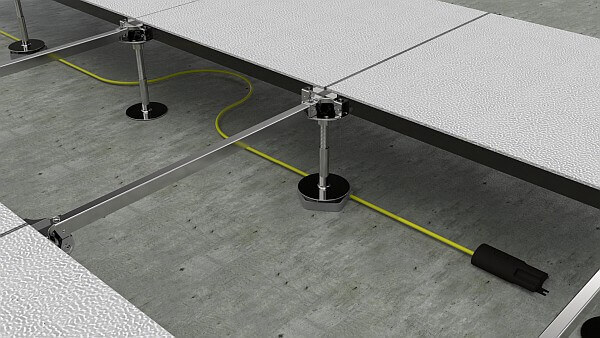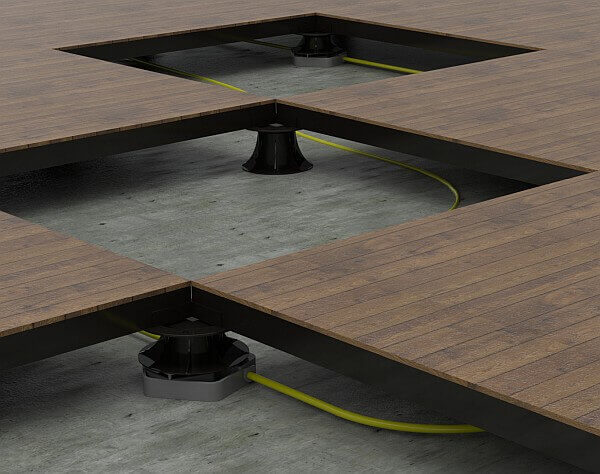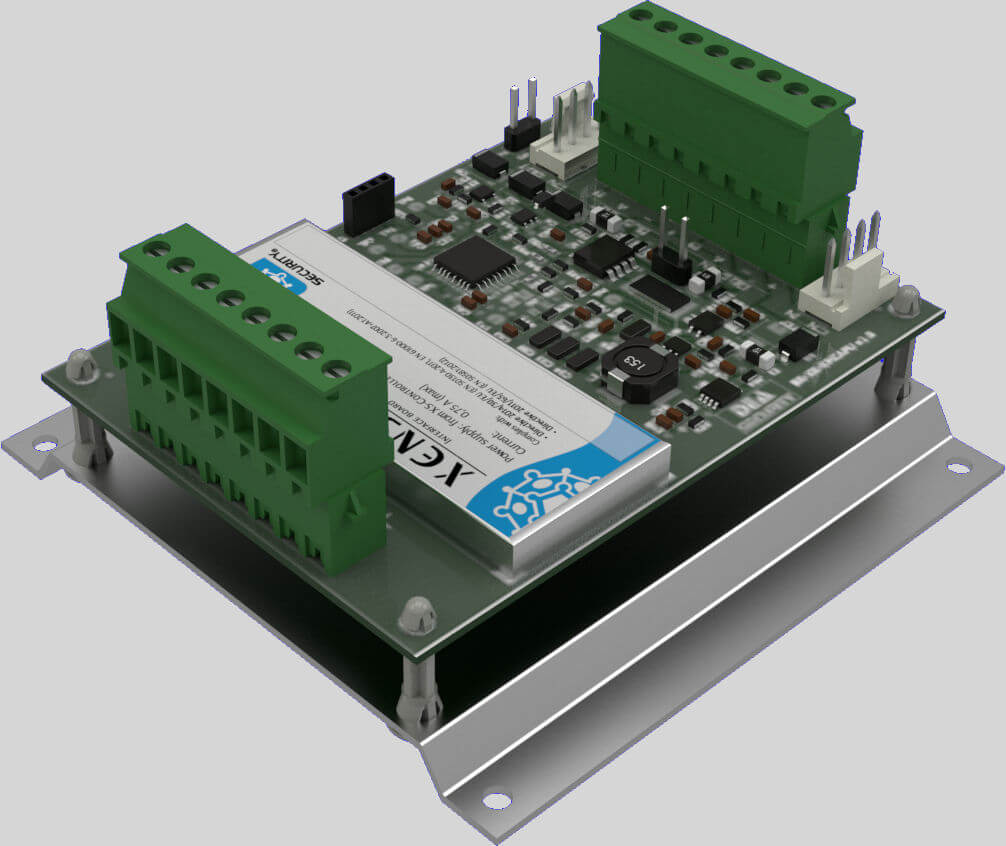SISMA CA PF
INTRUSION DETECTION SYSTEM FOR RAISED FLOORS
Integration with XENSITY
For even smarter management
WHAT DOES IT CONSIST OF?
SISMA CA PF is the only intrusion detection system on the market specifically conceived for the protection of raised floors. It employs pressure sensors which, installed under the pedestals supporting the raised floor, detect a person walking or standing on the protected area.
WHERE IS IT EMPLOYED?
The system can be used both to protect indoor raised floors (for example in banks, museums and showrooms) and outdoor ones (terraces and poolsides). SISMA CA PF can be integrated into domotic systems for a discreet and reliable detection of the presence, such as the automated light control.


HOW DOES IT WORK?
SISMA CA PF employs the same technology as SISMA CA system, featured by sensors able to detect the weight and the movements of a person on the floor and to discriminate environmental nuisances (if any) thanks to dual-channel sensor-modules.
WHAT DOES IT CONSIST OF?
The system is composed of sensors and analysis electronic boards. The sensors are provided in prewired modules which, singularly, cover areas between 6 and 24 square metres. These modules can be placed side by side to cover areas of any size.
The analysis boards manage and process the signals perceived by the sensors, triggering alarm events and making them available by means of local relay contacts or DEA NET centralization network.
As in SISMA CA system, the most important feature is the invisibility of its sensors, which allows protecting the raised floors in a secure and discreet way.
Key benefits
Invisible protection.
Placed below the support feet of raised floor, SISMA CA PF sensors prove to be completely invisible.
Individual calibration.
Maintenance-free sensors.
10-year warranty on the sensors.
* Warranty period valid in European Union only.
Integration with XENSITY
With the new BR-XS-SMCAPU interface board, SISMA CA makes its entry into the XENSITY ecosystem. The updated version of the XENSITY service software, capable of managing the new interface board, allows the system to be configured and its sensitivity and security level adjusted. Programming and calibration can be done both locally and remotely via IP network.
